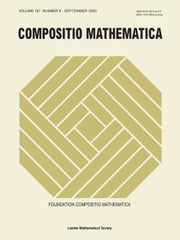No CrossRef data available.
Article contents
Non-uniformly hyperbolic endomorphisms
Published online by Cambridge University Press: 01 September 2025
Abstract
We show the existence of large  $\mathcal C^1$ open sets of area-preserving endomorphisms of the two-torus which have no dominated splitting and are non-uniformly hyperbolic, meaning that Lebesgue almost every point has a positive and a negative Lyapunov exponent. The integrated Lyapunov exponents vary continuously with the dynamics in the
$\mathcal C^1$ open sets of area-preserving endomorphisms of the two-torus which have no dominated splitting and are non-uniformly hyperbolic, meaning that Lebesgue almost every point has a positive and a negative Lyapunov exponent. The integrated Lyapunov exponents vary continuously with the dynamics in the  $\mathcal C^1$ topology and can be taken as far away from zero as desired. Explicit real analytic examples are obtained by deforming linear endomorphisms, including expanding ones. The technique works in nearly every homotopy class, and the examples are stably ergodic (in fact Bernoulli), provided that the linear map has no eigenvalue of modulus one.
$\mathcal C^1$ topology and can be taken as far away from zero as desired. Explicit real analytic examples are obtained by deforming linear endomorphisms, including expanding ones. The technique works in nearly every homotopy class, and the examples are stably ergodic (in fact Bernoulli), provided that the linear map has no eigenvalue of modulus one.
Information
- Type
- Research Article
- Information
- Copyright
- © The Author(s), 2025. The publishing rights in this article are licensed to Foundation Compositio Mathematica under an exclusive licence


